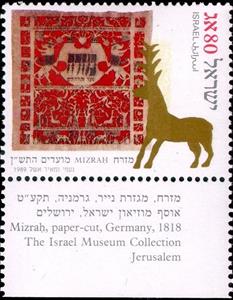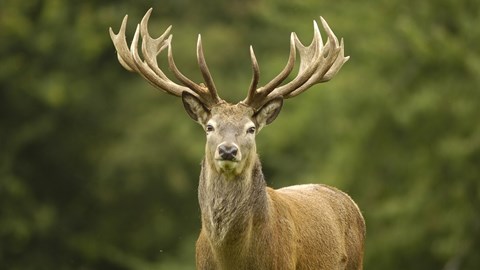Stamp with Collectible Margin: Stag Design Paper Cut (Germany, 1818) (Israel 1989)
Stag Design Paper Cut (Germany, 1818) (Israel 1989)
03 September (Israel ) within release Festival 1989 goes into circulation Stamp with Collectible Margin Stag Design Paper Cut (Germany, 1818) face value 80 Israeli new agora
| Stamp with Collectible Margin Stag Design Paper Cut (Germany, 1818) in catalogues | |
|---|---|
| Michel: | Mi: IL 1139T |
| Stamp Number: | Sn: IL 1032T |
| Yvert et Tellier: | Yt: IL 1083T |
| Stanley Gibbons: | Sg: IL 1083T |
Stamp with Collectible Margin is square format.
Also in the issue Festival 1989:
- Stamp with Collectible Margin - Hand Design Paper Cut (Morocco, 1800's) face value 70;
- Stamp with Collectible Margin - Lion Design Paper Cut (Ukraine, 1921) face value 50;
- Stamp with Collectible Margin - Stag Design Paper Cut (Germany, 1818) face value 80;
Stamp with Collectible Margin Stag Design Paper Cut (Germany, 1818) it reflects the thematic directions:
A deer (pl.: deer) or true deer is a hoofed ruminant ungulate of the family Cervidae. It is divided into subfamilies Cervinae (which includes, among others, muntjac, elk (wapiti), red deer, and fallow deer) and Capreolinae (which includes, among others reindeer (caribou), white-tailed deer, roe deer, and moose). Male deer of almost all species (except the water deer), as well as female reindeer, grow and shed new antlers each year. These antlers are bony extensions of the skull and are often used for combat between males.
A festival is an event celebrated by a community and centering on some characteristic aspect or aspects of that community and its religion or cultures. It is often marked as a local or national holiday, mela, or eid. A festival constitutes typical cases of glocalization, as well as the high culture-low culture interrelationship. Next to religion and folklore, a significant origin is agricultural. Food is such a vital resource that many festivals are associated with harvest time. Religious commemoration and thanksgiving for good harvests are blended in events that take place in autumn, such as Halloween in the northern hemisphere and Easter in the southern.
A museum (/mjuːˈziːəm/ mew-ZEE-əm) is an institution dedicated to displaying and/or preserving culturally or scientifically significant objects. Many museums have exhibitions of these objects on public display, and some have private collections that are used by researchers and specialists. Compared to a library, a museum hosts a much wider range of objects and usually focus around a specific theme such as the arts, science, natural history, local history, and other topics. Public museums that host exhibitions and interactive demonstrations are often considered to be tourist attractions, and many museums attract large numbers of visitors from outside their host country, with the most visited museums in the world regularly attracting millions of visitors annually.
The New Year is the time or day at which a new calendar year begins and the calendar's year count increments by one. Many cultures celebrate the event in some manner. In the Gregorian calendar, the most widely used calendar system today, New Year occurs on January 1 (New Year's Day, preceded by New Year's Eve). This was also the first day of the year in the original Julian calendar and the Roman calendar (after 153 BC)





